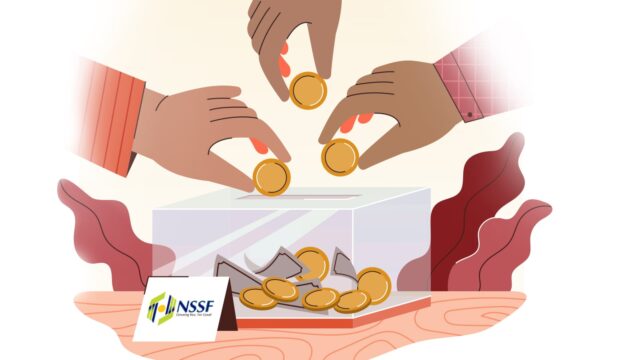What the proposed increase in NSSF monthly contributions means
President William Ruto’s intention to increase the contributions is backed by the NSSF Act 2013, whose implementation has, however, been stalled by court cases.

The relatively low number of Kenyans saving for retirement and the meagre payouts by the National Social Security Fund (NSSF) are behind the push by the Kenya Kwanza government to increase contributions to the pension fund.
The NSSF is a state-run pension scheme to which every Kenyan with an income is obligated to contribute a monthly percentage of their gross earnings. The goal of the contribution is to be guaranteed basic compensation in case of permanent disability, basic assistance to needy dependents in case of death and a monthly life pension upon retirement.
President William Ruto’s intention to increase the contributions is backed by the NSSF Act 2013, whose implementation has, however, been stalled by court cases.
If the Act were to be implemented, contributions would be based on what an employee earns as opposed to the current situation, where the contributions are standard across the board.
Currently, NSSF has a compulsory deduction for formal workers at the rate of Sh200 (employee) and KSh200 (employer) a month. This adds up to a contribution of KSh144,000 (400 x 12 x 30) if one has worked for 30 years.
The fund paid an interest of 10 percent in the year ended June 30, 2021, up from seven percent in 2020. The previous highest return was in 2014 when it paid 12.5 percent.
In comparison, in 2021, the median return for private pension schemes stood at 12.4 percent compared to 7.3 percent in 2020 according to pension fund administrator Zamara.
At an average interest rate of 9 percent and with compounding interest, the payout after 30 years of working and contributing to NSSF will come to KSh654,276.
Assuming a monthly stipend of KSh10,000, the NSSF payout will last a retiree a total of 65 months or approximately five years. So, if you retired at 60, the payout would take you to 65 years.
This reality may have been the reason the State started sending a monthly stipend of KSh2,000 to Kenyans above 70 years to cushion them from poverty in old age.
While NSSF is mandatory for workers in formal employment, those in the informal sector can contribute voluntarily but the uptake has been slow.
For purposes of the Act, the Upper Earnings Limit will be Sh18,000 while the Lower Earnings Limit will be Sh6,000. The contribution will be pegged at 12% of the gross income. In practical terms, if you earn Sh6,000, your total monthly contribution will be Sh720. If you earn Sh10,000, your total monthly contribution will be Sh1,200. If you earn Sh14,000, your total monthly contribution will be Sh1,680. From Sh18,000 earnings to infinity, the total monthly contribution will be pegged at Sh2,160. Remember, half the monthly contribution is paid by the employee and the other half is paid by the employer.
These envisioned changes will dramatically change the NSSF equation. Using the Sh2,160 monthly contribution and assuming a working life span of 30 years, the total contribution will amount to Sh777,600.
At an average interest rate of 9 percent and with compounding interest the payout after 30 years of working and contributing to NSSF will come to Sh3,533,091.
Assuming a monthly stipend of Sh10,000, this payout will last a retiree 353 months or 29 years. So, if you retire at 60, the NSSF payout will take you to 89 years as opposed to 65 years currently.
Aside from the increase in individual lump sum earned from NSSF, the higher monthly contribution will avail a huge pool of money for the broke Kenyan government to borrow from.
However, there is a concern given the history of looting billions of NSSF money in previous regimes. For Kenyans set to shoulder the burden of an increase in monthly contributions, the government should ensure that the increased NSSF funds are prudently used.
According to official data from NSSF, only 2.55 million Kenyans are active members of the Fund which had KSh.14.7 billion in total member contributions in the fiscal year ended June 30, 2021.
Therefore, the government has to come up with ways to increase the pool of NSSF contributors even as it increases the monthly contribution.
The proposed changes do not impact the voluntary monthly contributions by those in the informal sector. However, the government has plans to match voluntary contributions at the rate of one shilling for every two shillings saved in the scheme, up to a maximum of KSh.6,000 a year.
